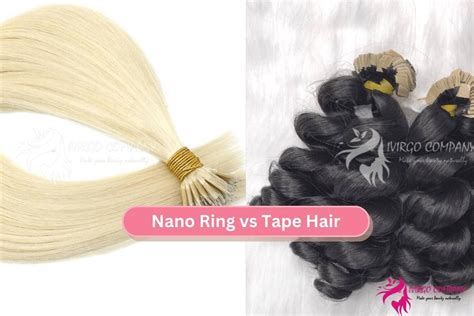As a beauty enthusiast, you’re likely aware of the transformative power of hair extensions and hair toppers. But which one is right for you? This comprehensive guide will delve into the differences between these two hair enhancement techniques, empowering you to make an informed decision.

Hair Extensions: A Versatile Solution
Definition: Hair extensions are individual strands of synthetic or human hair that are attached to your natural hair to add length, volume, or color.
Types: There are various types of hair extensions, including:
- Clip-in extensions: Convenient and easy to use, but not as secure as other methods.
- Tape-in extensions: Thin strips of hair attached using adhesive tape, providing a natural and long-lasting result.
- Fusion extensions: Bonded to your natural hair using heat or keratin, creating a seamless look.
- Microbead extensions: Small beads are used to secure the extensions to your hair, offering a discreet and customizable option.
- Sew-in extensions: Natural or synthetic hair is sewn onto your natural hair using a needle and thread, providing a voluminous and long-lasting result.
Benefits:
- Add length and volume: Extend the length of your hair or create extra volume for a fuller look.
- Experiment with color: Add highlights, lowlights, or ombré effects to your hair without damaging it.
- Cover up thin spots: Conceal areas of thinning hair or bald spots for a more confident appearance.
- Create special occasion styles: Elevate your hair for weddings, proms, or other special events.
Considerations:
- Cost: Can be expensive, especially for human hair extensions and professional installation.
- Maintenance: Require regular appointments for adjustments and touch-ups.
- Potential damage: Improper installation or removal can damage your natural hair.
Hair Toppers: A Targeted Solution
Definition: Hair toppers are larger pieces of hair that are designed to cover up areas of hair loss or thinning on the top of your head.
Types: Hair toppers come in various sizes, shapes, and colors to match your natural hair:
- Base type: Base materials include lace, silk, or mesh, which determine the breathability and comfort of the topper.
- Hair type: Made from synthetic or human hair, human hair toppers offer a more natural appearance but require additional care.
Benefits:
- Conceal hair loss: Effectively covers up areas of thinning hair or bald spots, restoring confidence.
- Add volume: Provides extra volume to the top of the head, creating a fuller look.
- Create a natural look: Many toppers use advanced construction techniques to blend seamlessly with your own hair.
- Easy to wear: Can be clipped in or attached with adhesive for a secure and discreet fit.
Considerations:
- Cost: Can be less expensive than hair extensions, but still require regular styling and maintenance.
- Maintenance: Toppers need styling, washing, and conditioning just like your own hair.
- Limited color and style options: May not be available in all hair colors or styles, limiting customization.
Comparison Table: Hair Extensions vs. Hair Toppers
| Feature | Hair Extensions | Hair Toppers |
|---|---|---|
| Length and Volume | Adds length and volume | Adds volume only |
| Coverage | Can cover thin spots and create special occasion styles | Conceals hair loss on the top of the head |
| Hair Type | Synthetic or human | Synthetic or human |
| Attachment Method | Attached to individual strands or larger areas | Clipped in or attached with adhesive |
| Maintenance | Regular adjustments and touch-ups | Styling, washing, and conditioning |
| Cost | Can be expensive, especially for human hair | Less expensive than hair extensions |
| Versatility | Can be used for a variety of styles and colors | Limited color and style options |
When to Choose Hair Extensions
- Want to add length and/or volume to your hair
- Desire to experiment with different hair colors or styles
- Have special occasion hair needs
- Looking for a long-term solution for thinning hair
When to Choose a Hair Topper
- Have areas of hair loss or thinning on the top of your head
- Prioritize concealing hair loss over adding length
- Prefer a more affordable option
- Value convenience and ease of use
Additional Considerations:
- Hair Quality: Human hair extensions and toppers offer a more natural appearance and are resistant to damage.
- Stylist Skill: Professional installation and maintenance is crucial for optimal results and minimizing damage.
- Personal Preference: Ultimately, the best choice for you depends on your individual needs and preferences.
New Applications for Hair Extensions and Toppers
Hair Extensions:
- Volume Rejuvenation: Add volume to the base of your hair for a youthful and lifted look.
- Color Correction: Use extensions as a temporary fix for hair color disasters.
- Protective Styling: Braid or sew in extensions to protect your natural hair from heat damage.
Hair Toppers:
- Medical Conditions: Conceal hair loss caused by alopecia, chemotherapy, or other medical conditions.
- Hairline Enhancement: Create a fuller hairline for a more youthful appearance.
- Short Hairstyle Extension: Add extra volume and length to short hairstyles without committing to extensions.
Conclusion
Choosing between hair extensions and hair toppers depends on your specific hair needs and preferences. Hair extensions offer versatility and transformative power, while hair toppers provide targeted coverage and a more natural look. By understanding the differences and limitations of each technique, you can make an informed decision and achieve your desired hair goals.
